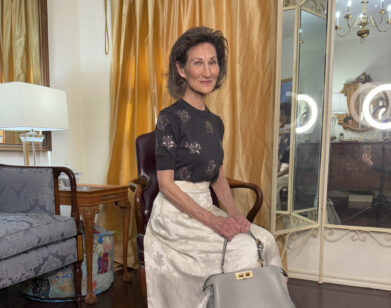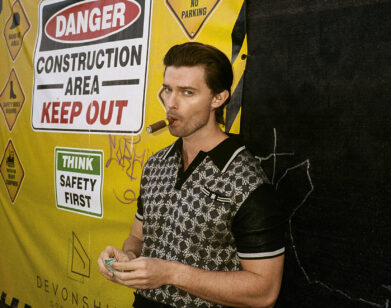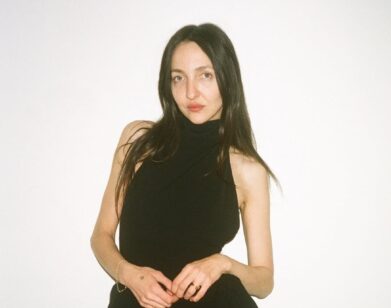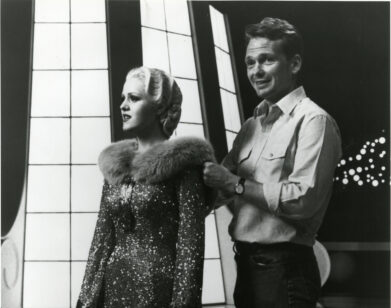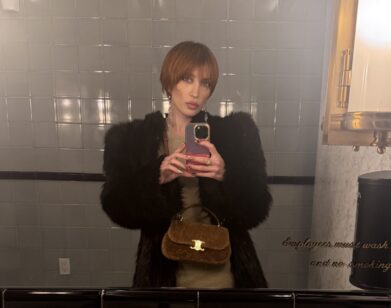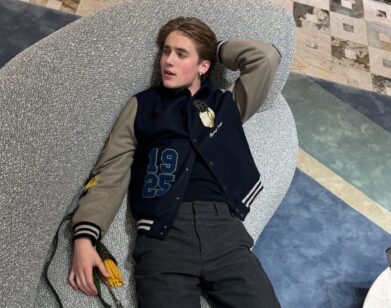DESIGNER
“I Want Total Global Domination”: Willy Chavarria by Tommy Hilfiger
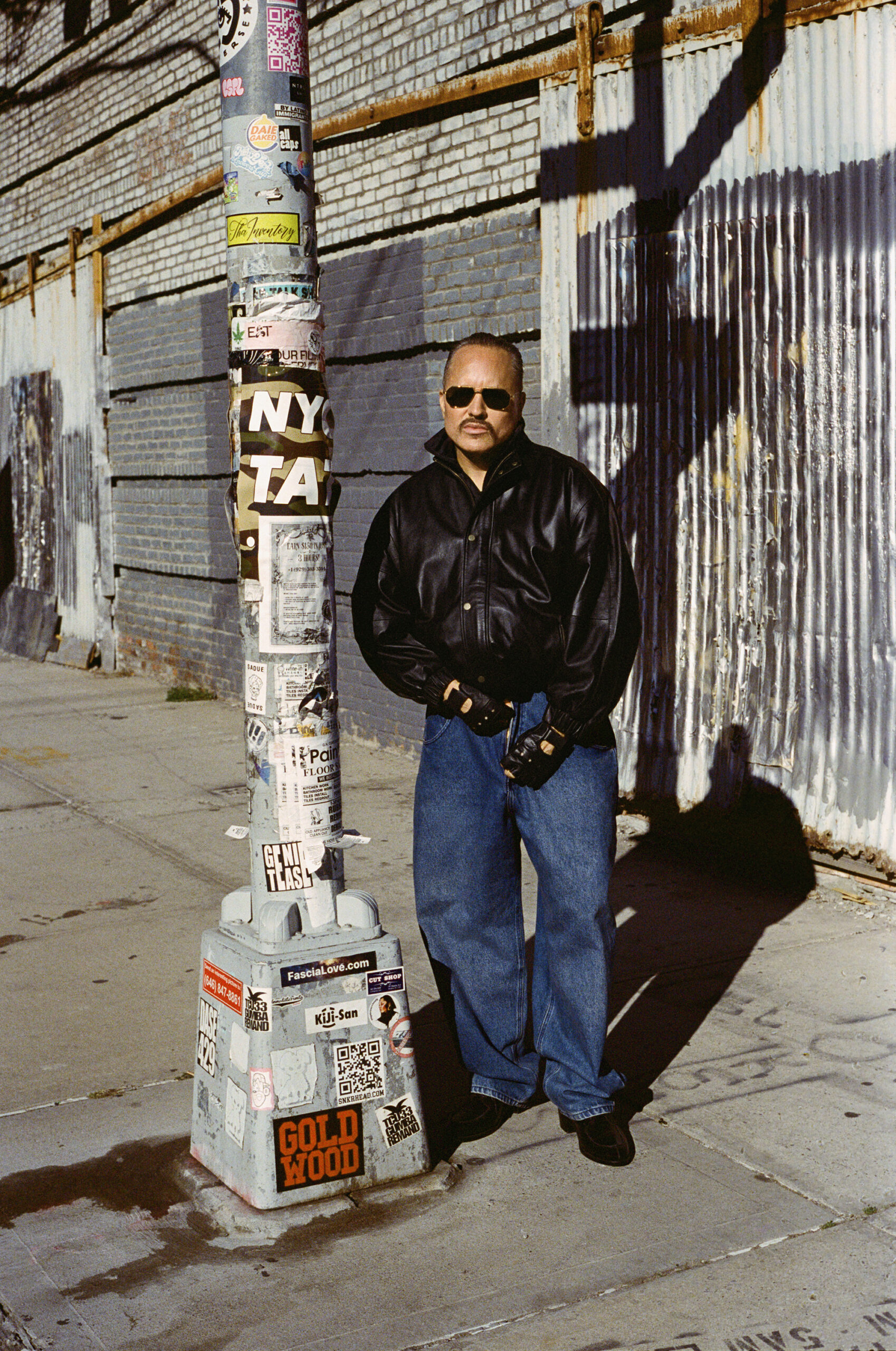
The CFDA Awards are just hours away, and Willy Chavarria, the California-born creative director known for his Latino take on classic Americana, is prepping his guests for the big event. It’s the second time that the 57-year-old is up for American Menswear Designer of the Year for his work on his namesake brand, but after taking home the award in 2023, Chavarria isn’t concerned with accolades. As he tells his friend and mentor Tommy Hilfiger over Zoom, “If I win again tonight, amazing. If not, I’ll still continue to work as hard as I do.” Spoiler alert: He won.
———
MONDAY 3 PM OCT 28, 2024, NYC
TOMMY HILFIGER: Congratulations on tonight.
WILLY CHAVARRIA: Thank you, my friend. I appreciate that.
HILFIGER: You excited?
CHAVARRIA: I’m excited. I’m dressing a lot of people, so I’m still in the throes of making sure the buttons are covered on time.
HILFIGER: I think you’ll have a good night.
CHAVARRIA: I hope so. But also, I’m so happy to do this interview with you. I love it. I love us.
HILFIGER: I’m anxious to hear your answers.
CHAVARRIA: I’m anxious to hear the questions.
HILFIGER: Should we go?
CHAVARRIA: Let’s do it. Where are you?
HILFIGER: I’m at the Aman hotel in New York. Where are you?
CHAVARRIA: I’m at The Mark in New York.
HILFIGER: A stone’s throw. [Laughs] So we both had the honor of receiving CFDA Awards. I won mine in ’95, and yours was in ’23, and now you’re up for another one.
CHAVARRIA: Yeah.
HILFIGER: It was career defining in the sense that before that, I didn’t really feel accepted by the fashion world.
CHAVARRIA: Wow.
HILFIGER: What did the recognition mean to you when you received it?
CHAVARRIA: It’s so funny to hear that from you because, by 1995, I feel like the world had already accepted you to such a degree—but I feel the same. When I received the award, I was like, “Wow, all of these fashion people inside the industry actually voted for me.” It was nourishing and empowering and it really made me feel like I was on track. To be up on that stage accepting that award and looking out into an audience of industry leaders that make American fashion work—I was grateful to everybody in the room, and for the first time I felt like I truly belonged.
HILFIGER: You truly belong in that room tonight, for sure. After winning once and being nominated again? It’s pretty fantastic.
CHAVARRIA: The nomination alone is fantastic. If I win again tonight, amazing. If not, I’ll still be happy, and I’ll continue to work just as hard as I do.
HILFIGER: I know you work very hard, but your work is influenced by your Mexican roots, which I think is very important. How does that perspective shape your approach to fashion?
CHAVARRIA: Yeah, I have a Latino perspective on fashion, and it’s something that comes very naturally to me because my influences growing up have had such an impact creatively. But also, the largest growing consumer base in the country right now is the Latino market. So it’s exciting to me that there’s a consumer that resonates with my work. But to tell you the truth, Tommy, the Latino thing is kind of incidental, because my brand is truly about inclusion. I like to celebrate those who have been excluded, so I highlight a lot of queer Latino, Black, Asian—people who have not always had a seat at the table.
HILFIGER: So that’s icing on the cake for you?
CHAVARRIA: Yeah.
HILFIGER: Now, how do you balance commercial with creative?
CHAVARRIA: I’m just trying to be like you, Tommy. [Laughs]
HILFIGER: You are you in such a profound way. I was describing your double-breasted jacket with the shoulders to a friend—nobody has that. That’s you and that’s yours. And right now, it’s really setting a huge trend. A lot of other designers are doing it. A lot of women are wearing it. A lot of men are wearing suits in a way they’ve never worn them before.
CHAVARRIA: I love that. I love a suit. I love a tuxedo, and I think that, like you, and Ralph [Lauren], and so many other great designers who’ve had an amazing influence on fashion and culture, I just want to make sure that the impressions I make and the trends I create are linked to this idea that we are all in the same room in the same house together. It’s important that we all take care of each other. That’s my message.
HILFIGER: You have heart and soul attached to the brand.
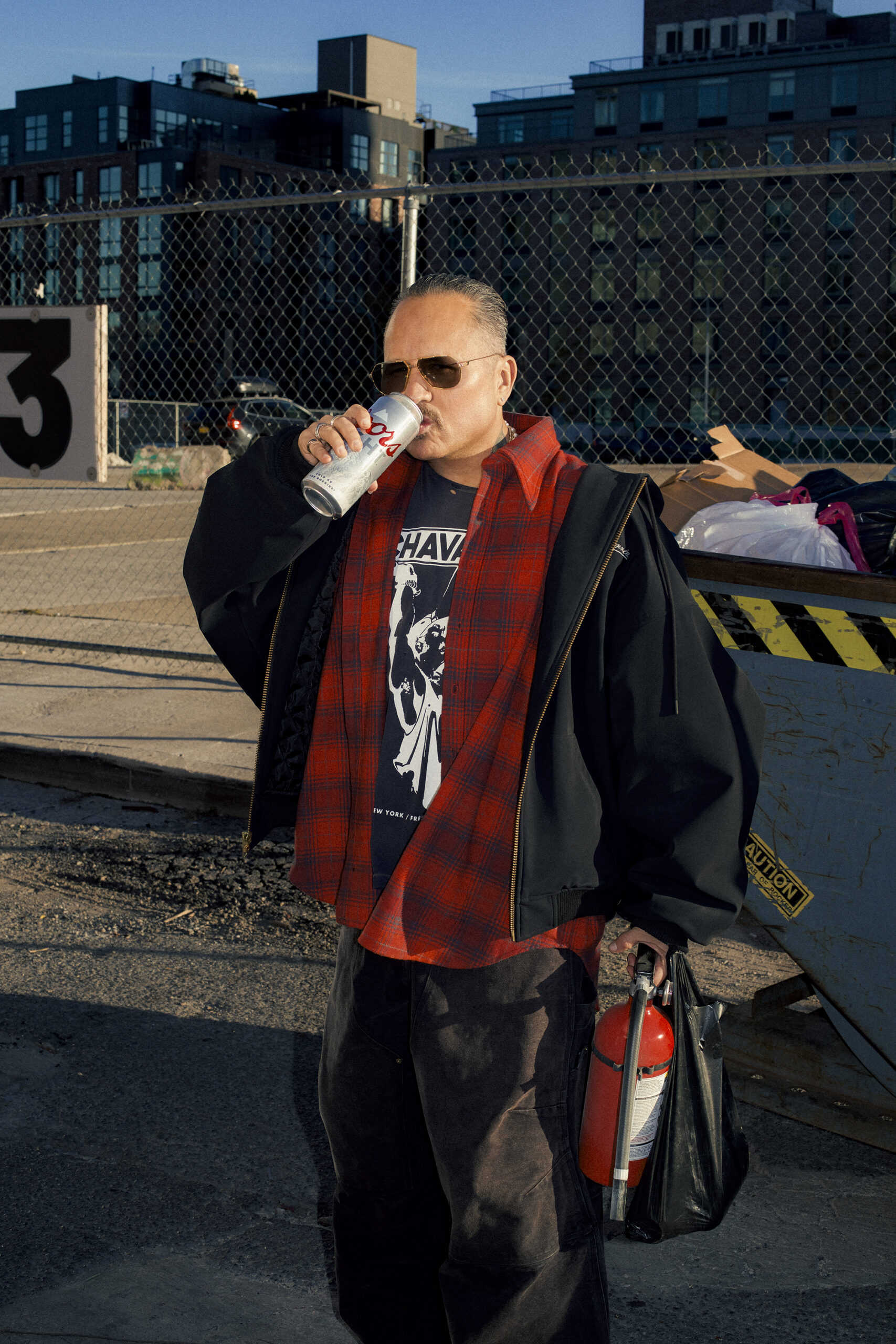
CHAVARRIA: Yeah. I think that it’s the only way to do it now.
HILFIGER: Absolutely.
CHAVARRIA: Excuse my background. I’m in someone else’s room.
HILFIGER: No, I know. We’re sort of in a separate area of the lobby, but it’s very loud. So what is the biggest challenge for designers today, in your mind?
CHAVARRIA: Well, the age of social media has driven the speed of operations to such a degree that it’s very challenging for designers to keep up with doing something for the sake of creating a beautiful product. Sadly, we see so much product that is not the best, but it’s selling because it looks good in an Instagram photo. So I think the challenge for designers is to hold true to quality and longevity in creating products. And I think it’s very expensive now—
HILFIGER: It is.
CHAVARRIA: To have a brand. And it’s really hard to do on your own. As your brand grows, you must bring in other partners and people to support you. That’s the only way to do it.
HILFIGER: I think that is very intelligent. Because if you bring people in who are strategic and can help you do the things that are not in your wheelhouse or maybe difficult for you to do, it’s very meaningful.
CHAVARRIA: Yeah. I appreciated our last conversation, and I have to update you on all that.
HILFIGER: Anytime. We’ll do it offline.
CHAVARRIA: For sure.
HILFIGER: So, what is the future of American fashion?
CHAVARRIA: Hmm. [Laughs] Oh, man. American fashion will always have a very distinct point of view, but I think that the future of it is very similar to the future of global fashion, because what we need right now, what people are craving, is to feel like they’re connected to something valuable. I think our values have shifted quite a bit over the last 10 years, since COVID and Black Lives Matter. Our values have become much more centered around social justice and human rights issues, and those things paired with fashion are really what the future is. It’s not so much about a big logo on a bag. You want to carry a bag because it tells a story of who you are as a person. So I think it’s an expression of individuality and care for your fellow brothers and sisters.
HILFIGER: Well, I think you are the future of American fashion.
CHAVARRIA: Tommy.
HILFIGER: You’re really leading the way.
CHAVARRIA: Thank you. That means so much coming from you. You’ve shown what a great designer can be, and you’ve shown how to be a part of culture, how to move culture, and how to have a great business. That’s what it’s all about.
HILFIGER: Well, I like fashiontainment. I like the collision of fashion and entertainment and pop culture, and I was going to ask how you feel about it?
CHAVARRIA: The two are so close now. I want to be more involved in entertainment, so something I’m doing now is working with musicians and actually producing music together as a collab. In my most recent collection, I did a project with Yahritza y Su Esencia from Washington state. They sing Mexican music. They’re incredible kids. We did a song together and we previewed it in the show, and then we released the record on Columbia Records that day.
HILFIGER: I read about that.
CHAVARRIA: [Laughs] Yeah. So I think that there’s this overlap with entertainment and music as it exists. I just want to bring it a little bit closer and make it a business.
HILFIGER: I think you’re stepping in the right direction. So, what’s the most embarrassing thing in your closet?
CHAVARRIA: Oh man. [Laughs] Okay. This is kind of a weird secret, but for some reason I own some very gaudy Versace pieces.
HILFIGER: During the days when Gianni was designing, it was flamboyant, it was amazing.
CHAVARRIA: Oh yeah. I love that stuff. Back in those days, I was so about it. I have a big gaudy Versace robe, and I have Versace pajamas, and I have Versace sunglasses, and I can sometimes be seen walking my dog around Tribeca wearing head-to-toe Versace. [Laughs]
HILFIGER: That has to stand out. I’m surprised we haven’t seen it being photographed or on Insta.
CHAVARRIA: It happens at night. But now I try to only wear Willy. I want to represent my own brand.
HILFIGER: Exactly. So who is your ultimate style icon, other than Gianni Versace? Is there someone you’ve always looked up to from the past or someone you think has the magic touch? Because I thought Karl Lagerfeld was beyond genius.
CHAVARRIA: I’ve always admired Erykah Badu, her style and how she’s evolved over time. But it’s interesting, Tommy. I’ve just really been inspired by people on the street. I look at people walking around Midtown and walking around Queens. It’s usually the people who aren’t really trying to be fashionable that have a look that really resonates with me, and it’s something I want to amplify and study.
HILFIGER: That makes a lot of sense. What era is most interesting to you in fashion? If you were to look back over sort of a timeline?
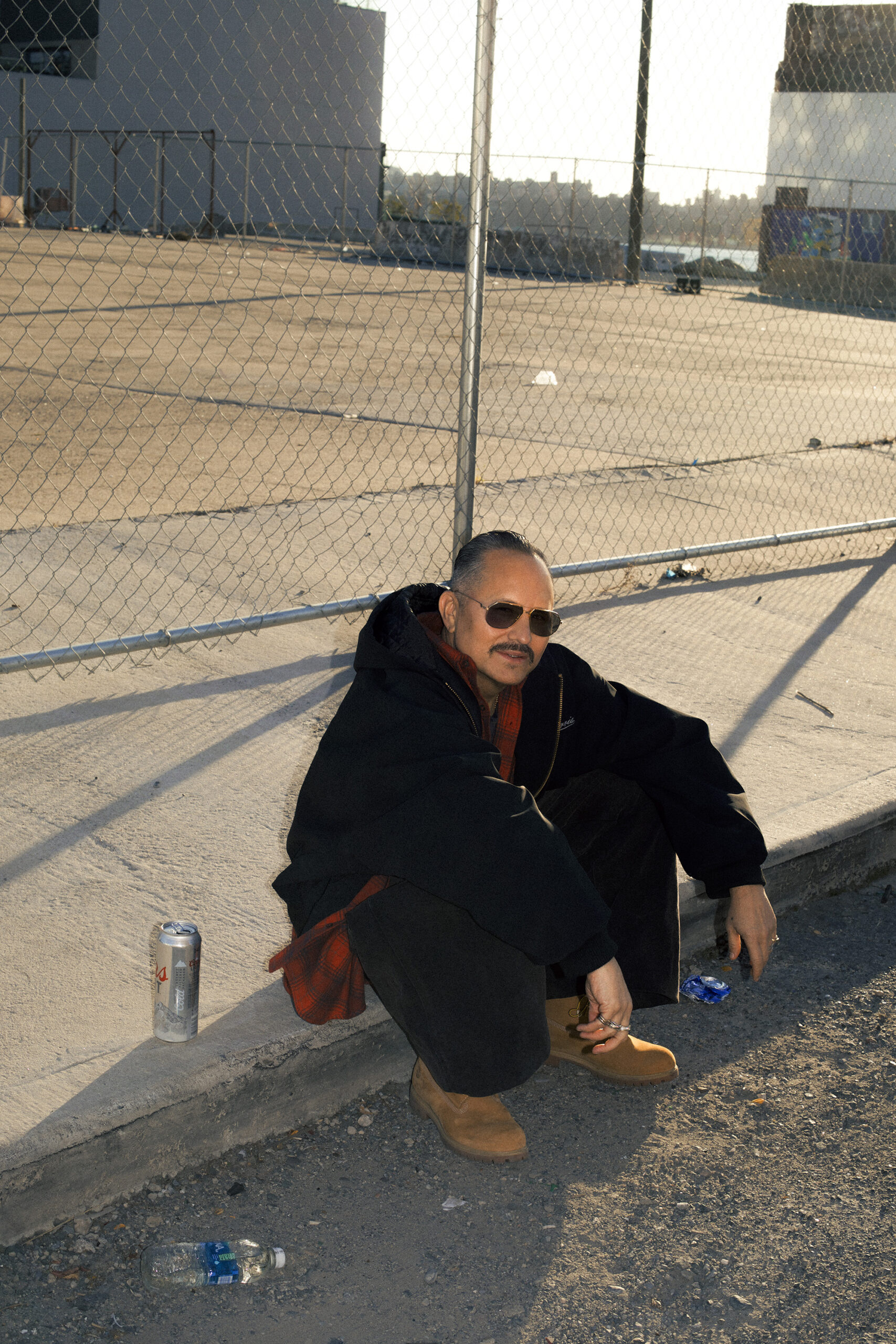
CHAVARRIA: I love the late ’30s and early ’40s, a little bit into the early ’50s; I love those silhouettes and the dedication to quality and craftsmanship. When you find those garments vintage, they’re still intact and they still look beautiful. I also like the ’80s a lot, and I love merging the two to create something new.
HILFIGER: I see the ’40s in a lot of your tailoring, and the full-cut, high-waisted trousers pleated with the boxy jackets.
CHAVARRIA: Yep. I love that. The strong shoulders.
HILFIGER: Very strong.
CHAVARRIA: I loved the way that women’s apparel was also very strong and empowering as well. Strong shoulders on the women’s suiting, and the tailoring was just like the men’s, but fitted to the women’s body.
HILFIGER: What’s next for your brand?
CHAVARRIA: I want total global domination like you, my friend. [Laughs]
HILFIGER: And for you as a person, what’s next?
CHAVARRIA: I still have some goals that I really want to achieve. I need to open stores; I really want to pursue music partnerships and hopefully do more film. I did one film for “Safe from Harm” [Willy Chavarria’s AW24 show], and I really felt empowered. So, I’d like to continue merging film, music, and fashion.
HILFIGER: I could see you doing a big feature film.
CHAVARRIA: I would love to do that, something very romantic and violent and sad.
HILFIGER: Maybe you should get an agent in Hollywood to help open doors for you in the film industry.
CHAVARRIA: I’m speaking with a couple right now.
HILFIGER: I’m sure they’ll come to you.
CHAVARRIA: Yeah. I’ve been on this streak where I feel like if I’m putting down something very sincere in what I do, the right people come into my circle.
HILFIGER: Absolutely.
CHAVARRIA: I really believe that.
HILFIGER: Well, that’s happening now.
CHAVARRIA: It’s happening right now on this call.
HILFIGER: It’s been a lot of fun.
CHAVARRIA: It has been.
HILFIGER: So I think that’s it in terms of the questions. I look forward to seeing you tonight, and I wish you all the luck in the world. You have my vote.
CHAVARRIA: I really appreciate it. Is your wife coming tonight?
HILFIGER: She’s coming.
CHAVARRIA: Wonderful. And you can meet my husband.
HILFIGER: Fantastic. Are you dressing him in Willy?
CHAVARRIA: Yes. I’m dressing several people in Willy tonight.
HILFIGER: I’ll be able to spot them because your look is so distinct.
CHAVARRIA: Well, I’m introducing something new tonight. It’s a little different.
HILFIGER: I can’t wait to see it.
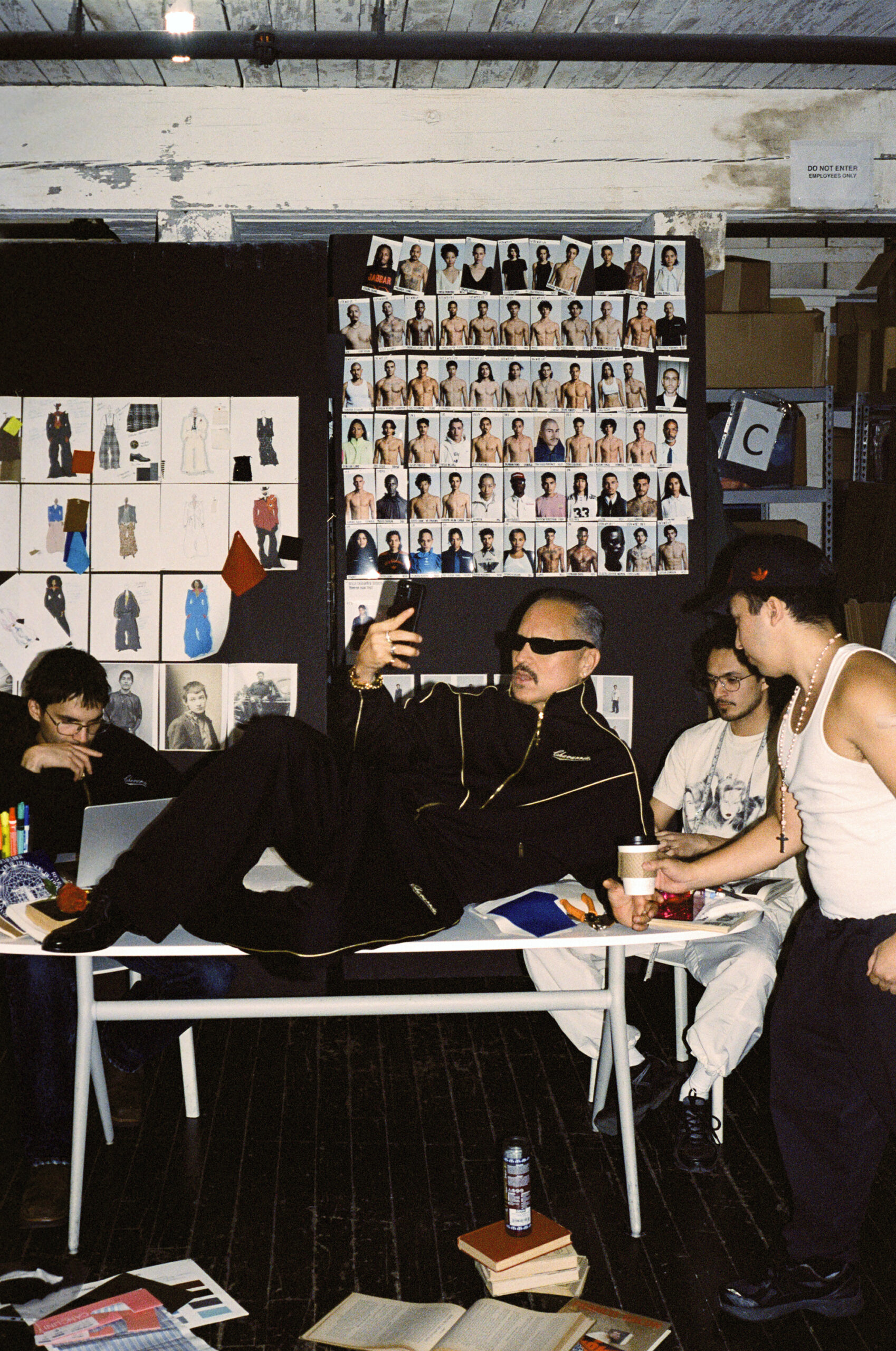
———
Hair: Joey George using Oribe at Streeters.
Makeup: Frankie Boyd using Addiction Tokyo at Streeters.
Photography Assistant: Andrew Espinal.
Production Assistant: Grace Hunter.
Post-production: One Hundred Berlin.

